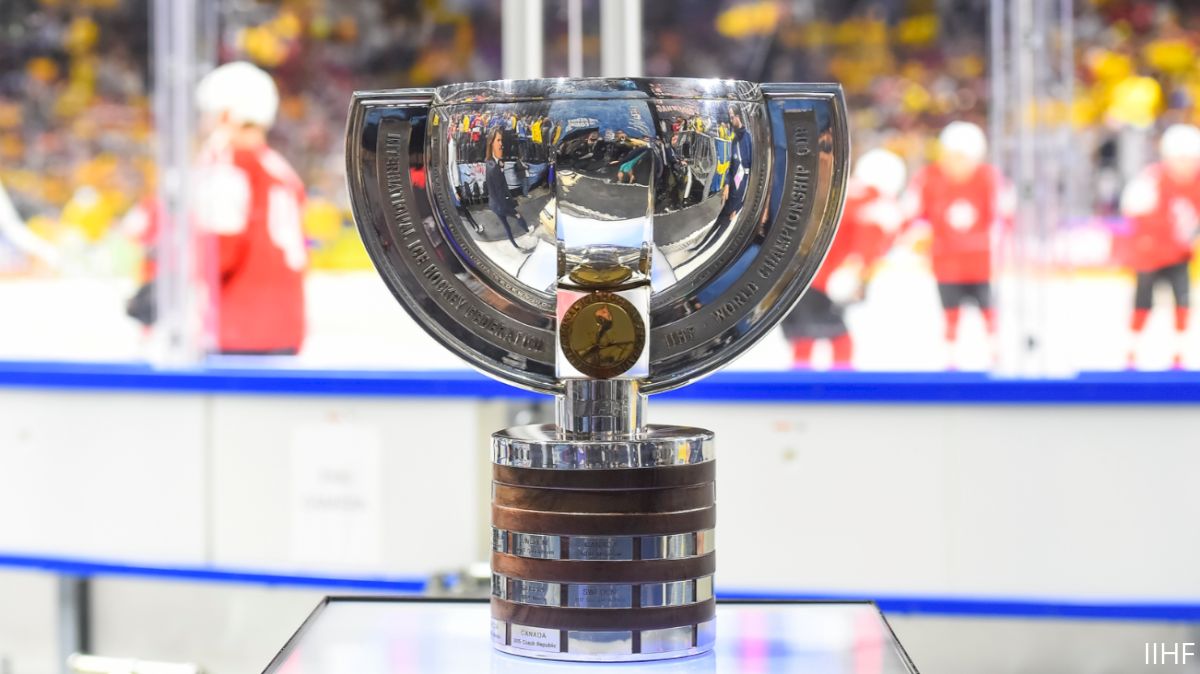Everything You Need To Know About IIHF World Championships
Everything You Need To Know About IIHF World Championships
With this year's IIHF World Championships underway here is some insight into the history of the tournament that you should know.

The ultimate goal for European hockey players is the “Triple Crown”: the Stanley Cup; an Olympic Gold Medal, and an IIHF World Championship.
North American fans might think of the World Championships as some foreign hockey version of college basketball’s N.I.T., a fallback position for players who failed to make the Stanley Cup playoffs. To the European players, it is anything but. They consider, and rightly so, the IIHF World Championships as an off-year Olympics. For fans who can’t get enough hockey in their lives during May Madness, you might want to consider the exquisite live action taking place every morning right up to the Stanley Cup playoff pregame. Here is a World Championship primer for the uninitiated.
The Sheet
The biggest difference between the World Championship matches you can view in the morning and the Stanley Cup Playoff contests in prime time is the ice surface: WC games are being played on the classic Olympic sheet, approximately 100’ wide, as opposed to the 85’ wide games played in North America. It changes everything. There is a common misperception that Europe’s larger ice surface makes for greater offense and more creativity. Sadly, no. Because of the NHL’s commitment to stifling defense with its subsequent dump-and-chase attack, tons of physical confrontations lead to offensive zone turnovers, a viable form of offense.
World Championship games from Europe have nearly 20% more space to cover for the forecheckers looking to disrupt breakouts. IIHF defensemen, most of them technically superior in the art of puck control, simply reverse and move the puck up the weak side of the forecheck. The defenseman on the blue line simply cannot pinch along the boards because he doesn’t have the time to take the additional two strides needed to cover the wider ice. So he wisely retreats and teams break out easily.
Another consequence of the larger ice surface is the attacking team’s zone entry. It’s much too risky for defenders to try and “step up” to disrupt rushes, because of all the additional real estate along the boards. Teams enter comfortably as defenders concede the perimeter to the attacking team.
The wide-ice IIHF game is an easier game to watch than North American play, with much longer touches and little of the frenetic pinball possessions of Stanley Cup play. There will be fewer Grade-A chances, but more technical skill on display, albeit at three-quarter speed. Think World-Cup soccer and what’s popularly known as “The Beautiful Game.” Lots of time to identify the puck carrier, plenty of successful short passes, but not the blistering intensity. In Europe, physical player assaults contain more risk than reward.
THE TROPHY
Forgive me North American history lovers, but the Euros have a much more aesthetic championship mug than the Stanley Cup, one that is also significantly easier to drink champagne from. The following is from author and hockey historian Andrew Podnieks:
The IIHF World Championship Cup was presented to the gold-medal winning team for the first time in 2001, the Czech Republic being the first team to receive it. Robert Reichel, Czech Republic captain and current assistant coach, was the first player to hoist the trophy.
After the 2000 Championship in Russia, the French, Barcelona-born artist André Ricard received a request from the IIHF to design a new World Championship trophy. The objective was to create a piece of art with a design that would reflect the then 81-year-old tradition and prestige of ice hockey's World Championship. Ricard, one of the world's most distinguished art designers, produced a handmade trophy which weighs 10 kilos, 514 grams. It stands 46 centimeters tall and the bowl has a diameter of 26 centimeters. The mug is mainly made of silver with parts of gold, and the base is from the precious woods ebony and bobinga. The whole procedure, from the first draft to the presentation, took eight months.
The winning team is presented with the original trophy for the gold-medal game ceremony, and it is exchanged for a replica following the on-ice festivities. The winning team keeps the replica trophy to which a ring with engraved player and coaching staff names are added. The original trophy is kept at the IIHF offices in Zurich, Switzerland.
Color and Anthems
There are hockey jerseys, and then there are IIHF national team jerseys. The swirling blue and red of the Czechs, the macho Red of Russia, and the kingpin of any jersey on the planet, the “Tre Kronor” of Sweden are straight out of an artist’s studio. One would be remiss if they didn’t mention the proud lion on the blue chest of every Finn.
World Championship fans love to sing—it sounded like Christmas Eve caroling on opening night in Bratislava, as the fans reveled in their Czech neighbors’ dismantling of defending champion Sweden. And whistles from the crowd are not from appreciation, quite the opposite in fact. A bad call or displeasure over the home team’s play will cause an unpleasant symphony of tweets.
The timing of the national anthems played during morning broadcasts for the next two weeks will seem disconcerting at first—the patriotic music follows the contest, unlike North America where the opening puck drop immediately follows national anthems. IIHF logic is actually quite sound, especially in games between separate nations. Teams have to earn their anthems—win the game and hear your country’s music. Losers have to grimace and bear it—to the victor go the spoils. It is one of the most enduring images from the post-game, seeing the shot from a hand-held camera over the shoulder of the match’s hero, zooming in to his team’s large flag being raised to the banners, all while being serenaded by his nation’s anthem. It’s great sporting theater, and a daily occurrence at the IIHF World Championships.